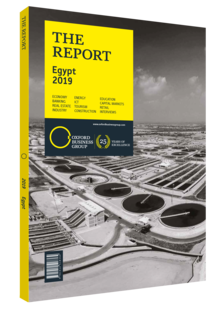Investments in Egyptian rail networks to add capacity and boost safety
Despite the important role that railway transportation has had in Egypt’s economic development, and as a means to connect the southern rural areas of Upper Egypt to the more industrialised north, years of underinvestment have led to a diminishing performance of the national network. This has had a significant impact on the system’s safety and its overall contribution to transport across the country.
Although the railway is commonly used by passengers, domestic rail cargo transport is still minimal. As the country invests in new industrial zones and modernises its ports infrastructure to account for rising commercial activity, an adequate freight railway system becomes increasingly important.
Upgraded Network
In February 2018 Hisham Arafat, the then-minister of transport, told local media that railways should transport 25m tonnes of goods by 2022, up from 5m tonnes in 2018. Bridging that gap will require hefty financial commitments, with the government estimating that the revamp of the railway system would require $10bn in investment.
The urgency to upgrade the national railway network has been underlined by repeated fatal accidents. In August 2017 the collision between two trains in the Mediterranean city of Alexandria left 41 people dead, and led to the resignation of the head of the country’s Railway Authority. The risks of the system’s aged infrastructure and lax safety procedures were once again on display in February 2019, when a speeding train collided with a platform, setting off a fire in Cairo’s main railway station, killing more than 20 people.
Revamping the System
Renovation of the existing fleet will be crucial for a better performing network. In line with this, Egyptian railway authorities have entered into a handful of contracts with international equipment providers. In mid-2017 the Egyptian government concluded a $575m agreement with General Electric. The deal includes the provision of 100 new train locomotives with a 15-year maintenance agreement and spare part provision, and the upgrading of 81 train carriages. All locomotives are expected to be delivered by mid-2020. Another key deal for the acquisition of 1300 train coaches was signed in September 2018. The €1bn agreement was established between the Egyptian National Railways (ENR) and the Transmashholding-Hungary Consortium. The 2017 international tender had attracted firms from companies based in China, India, Italy and Romania.
Besides the need for newer trains and carriages, improving safety will also depend on new signalling technology and procedures. Railway authorities signed a contract with Thales for the modernisation of signalling and safety equipment on the 48-km railway section between Cairo and Benha, on the Cairo to Alexandria track, which carries an annual 25m passengers. Modernisation of the equipment will make it possible to increase maximum train speeds on the section from 120 km per hour to 160 km per hour. Thales had won a previous contract with the government for the improvement of signalling equipment on a 180-km stretch of railway between Cairo and Aswan.
The ENR is currently being assisted by the European Bank for Reconstruction and Development (EBRD) to transform its existing cargo transport operation into an independent subsidiary. As of 2017 the railway company’s cargo operation had 90 working locomotives out of a total of 217, as many as 5400 working wagons and employed approximately 2000 people. Ongoing efforts to modernise the system’s carriages and locomotives are likely to also include those currently operated for the cargo operations.
The railway system is a key part of Egypt’s transport system, but upgrades are needed to respond to the needs of modern transport integration, especially as the country looks to further connect railways and ports. Investments taking place to improve safety and capacity should help bring long-term economic returns through a more efficient transport system.
You have reached the limit of premium articles you can view for free.
Choose from the options below to purchase print or digital editions of our Reports. You can also purchase a website subscription giving you unlimited access to all of our Reports online for 12 months.
If you have already purchased this Report or have a website subscription, please login to continue.

